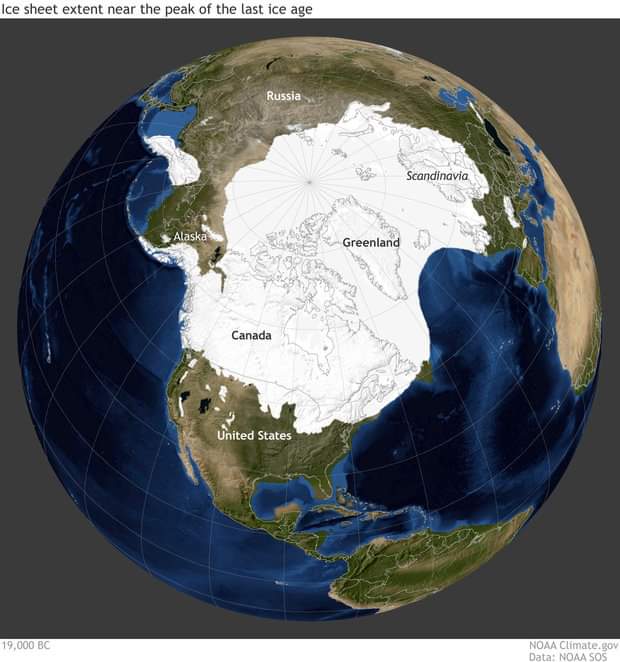In the Universe
the Earth is a dust particle that transits the immensity of space. It tirelessly rotates and revolves around the Sun along with the rest of the planets that make up our planetary system. Why, if it is so small in the Universe, is it so huge and important to us? Because it develops our existence as human beings. For millennia, man has explored the land, air and water, has exploited its resources and has given rise to civilizations. Thus, step by step, day by day, the environment was built, the changing scenario that today is the “‘terrestrial surface. A journey through it will give an account of everything that the forces of nature did, of everything that men did and of what still remains to be done. Introduction: Geography's main purposes are to locate, describe, explain and compare the different landscapes that are observed on the earth's surface and the activities of the men who are members of those landscapes. The geographic landscape is constituted by a portion of the terrestrial surface that, after being examined from different points of view, it is noticed that it has its own characteristics. The aspects of the landscape, which are due exclusively to nature, form the so-called natural landscape
These elements are:
area and configuration, relief, waters, climate, soils, minerals, vegetation and animal life. The modifications introduced by man in the natural landscape give rise to the cultural landscape, whose main elements are: population, housing, production and communications. The geographic landscape encompasses both the natural landscape and the cultural landscape. General geography provides us with the basic knowledge necessary to be able to study the different landscapes. The main branches of general geography are physical geography and human geography. Physical geography includes mathematical geography, physiography, and biogeography. Human geography encompasses economic geography and political geography. Regional geography studies the geographical landscapes of the different continents and islands separately, applying the concepts provided by general geography. Geography has acquired great importance in recent years because the growth of the world's population makes it more necessary every day to study natural resources and the best way in which man can use them, according to the characteristics of the different geographical landscapes. When analyzing the constituent elements of the geographic landscape, geographers can pay more attention to certain aspects, corresponding either to the natural landscape or to the cultural landscape. Due to this, it is customary to establish a division of general geography into two large sections: physical geography and human geography. These, in turn, are divided into numerous branches, some of which are listed below:
Covers:
Economic geography. It studies the way in which man uses resources, in different types of landscapes, to supply his needs; and how the exchange of products between the different Political geography. studies the situation, limits, systems of government and relations between the different States. The knowledge gained through the study of general geography is then applied to the study of regions, which is the most important field of geographical research. Regional geography specifically studies the geographical landscapes of the different continents and islands. Regional geography, which allows us to know the earth as a setting for human activity, should be studied after we have prior knowledge of general geographic principles. That is why regional geography is taken after general geography. Regional geography studies the different landscape areas of the earth's surface. The divisions established for this study are very varied. The regional division is sometimes made based on the continents, but since in each continent there are regions that present very different landscapes, the continents are divided into geographical regions, studying each of them separately. Within these regions, sub-regions can be identified, which present their own characteristics in their landscapes and even very small areas, or micro-regions, in which a very detailed geographic study of great value for the population that occupies it can be carried out. Due to tradition, many tend to study regional geography taking countries as the basis of division. This division based on political geography is of little value for the total geographic study, since there are numerous geographical regions that are divided politically. This occurs, for example, with the Llanos of South America, which is a well-defined geographical region, but which is politically divided between the sister nations of Venezuela and Colombia; Another similar case is that of the North European Plain, which extends through several countries, from France to Russia. Each country, on the other hand, always comprises several geographical regions, which very rarely coincide with political divisions into provinces, states or departments. The modern tendency is oriented towards studying geographical regions, taking the characteristics of their landscapes as the main basis, and then pointing out the political division that corresponds to them.
In the geographical landscape are materials and forces that the name can use in its beneficiary
These materials and forces are natural resources, such as arable land, minerals, forests and waters. Primitive man barely knew how to use some of these resources elementally and life was therefore miserable. Man today can use not only the resources that are within his immediate reach, but he is capable of discovering some, such as oil and other minerals, sometimes located at great depths. But while man has learned to obtain and use more resources, the world's population has also increased rapidly. Sanitation has made so much progress in recent years that the average human life has been increasing. The growth of the world's population and scientific progress require better knowledge and better use of resources. This is the reason for the growing importance that geography has achieved, the study of which contributes to the well-being of humanity in the following two fundamental aspects: 1) Geography studies the natural characteristics and resources of the different regions (natural landscape and the way in which they affect the ways of life of its populations; 2) Geography studies the way in which the population adjusts to the region in which it lives, using the advantages offered by the available resources and eliminating or avoiding unfavorable aspects (cultural landscape).
THE WORLD TODAY
Our planet is home to around six billion people. It is made up of multiple geographical spaces, as a consequence of the relationship between the various natural settings and the societies that settle in them and imprint a type of organization on it. Some of the following peculiarities that present the current world are: • the population is politically organized in States that, for the most part, have adopted democratic political regimes; • there are three centers of world power: Japan, the United States and Western Europe; • The growing international trade allows products of very diverse origins to be within the reach of almost all the peoples of the planet; • The economic scenario is fragmented into blocks. Globalization forced countries to integrate to jointly face the problems presented by the world economy. For example, Mercosur and the European Union; • the planet has become a global village; there are increasingly sophisticated communication systems that allow millions of people to be witnesses of the events while they are happening; • there is a world culture, beyond the peculiarities that survive in small groups; Developing countries and those with weaker economies are affected by the incessant and disproportionate growth of cities. As a consequence of this, situations of urban marginalization and difficulties in labor insertion are produced, which drive the exercise of the informal economy; • Global competition requires making changes in the way of producing, which are not easy for developing countries to implement. They lack the political institutions and economic infrastructure to confront them; • inequality in income and in the growth of the population's standard of living. Two-thirds of the world's population lives in countries with low per capita income; • multinational companies dominate world production; • There are clashes between producers and organizations that defend the environment, over the management of natural resources and pollution.
Humanity will have to face several challenges in the new century: population, political, economic and environmental. The greatest challenge will be to reduce the gap that separates developing countries from developed ones, which is the origin of all evil. The aid that the rich countries gave to the poor, in general, has not borne fruit and only brought the latter into debt from which it is very difficult for them to get out. MAIN GEOGRAPHICAL ISSUES POPULATION • Excessive population growth. • Illiteracy. • Intense migratory currents. • Hunger. • Global diseases. • Social insecurity. • Discrimination. • Lack of recognition of minorities, especially indigenous populations. • Explosive urbanization. • Gender inequalities. ENVIRONMENTAL • Deforestation. • Loss of biodiversity. • Soil erosion. • Desertification. • Natural disasters. • Global climate change. • Hole in the ozone layer. • Pollution. • Toxic and nuclear waste. • Urban waste ECONOMIC Unemployment. Poverty. Excessive land use. Irrational use of natural resources. economic gaps. Globalization. External debts. POLITICIANS • Areas without sovereignty. • Refugees. • Wars. • Ethnic conflicts. • Economic-political blocs. • Nationalist movements. • Violation of human rights. • Separatism and regionalism
This is called the territorial or geographic division of labor. The buying and selling of products on the world market is becoming more and more free. This allows a product to compete for lower costs and better quality not only in peripheral countries that are permanently disadvantaged, but also in central countries. For example, of the total sales of the Exxon oil company, 88% are made abroad; Coca-Cola sells two-thirds of its soft drinks abroad. Globalization is also seen in world financial markets, where international transactions are around $1.2 trillion a day, a hundred times the value of international trade. Multinationals support a fifth of the Gross World Product. In addition to capital flows, technological advances have made the transport of passengers and goods increasingly easier and cheaper. If we look at the maps of the land, sea and air routes, we notice that their spatial distribution responds to the level of development of the nations. In the central, developed and industrialized countries, the spaces are integrated by very dense networks; On the other hand, in peripheral, developing countries, the spaces are marginalized and the networks are not very dense. Source consulted: Geography The Contemporary World Polimodal M.J.Echevuz


.jpeg)
.jpeg)
.jpeg)






